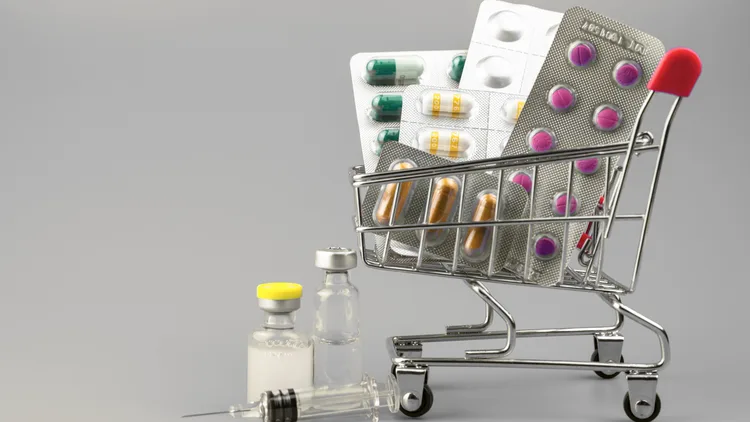
William Shaksphere once said, “What’s in a name?”. He meant to tell us that the true essence of something can never be captured by just its name.
While that certainly applies to people, the case is not necessarily the same for medicines. Have you ever wondered why medicine names are so complex and difficult to pronounce, almost as if they were made to mock tongue twisters?
Turns out, every drug has at least three different names – a chemical name, a brand name, and a generic name; and each name carries a plethora of information we didn’t even know existed. Just the name of a medicine is enough for a pharmacist to understand how the drug works in your body. How’s that possible, you ask? Let’s start with a basic understanding of the difference between the three names a drug has.
- The Chemical Name:
The chemical name of a drug is a detailed and scientific name that reveals the chemical structure of the drug. This name comes from its molecular structure. For example, the chemical name of the well-known drug, Tylenol, is N-acetyl-p-aminophenol. 
A drug gets its chemical name from the International Union of Pure and Applied Chemistry (IUPAC). It tells chemists everything they need to know about the structure of a drug. However, the chemical name is, more often than not, way too complex and lengthy to remember for everyday use. Imagine walking into a medical store and telling the shopkeeper to give you an N-acetyl-p-aminophenol.
It’s like déjà vu of “Iyer…Venu Gopal Iyer…”. For those of you who’ve seen Dhamaal, that is. (And by the way, try beating me at saying the entire name, I remember it verbatim)
2. Generic (Non-Proprietary) Name:
 Now, let’s try this in very simple words, every drug has a generic name that is used everywhere – packaging, labels, medical documents, etc. This name helps chemists identify, very clearly, what active chemical substance the drug is made of, by giving the API a unique name. A generic name ensures we’re talking about the same substance, even if it’s made by different companies.
Now, let’s try this in very simple words, every drug has a generic name that is used everywhere – packaging, labels, medical documents, etc. This name helps chemists identify, very clearly, what active chemical substance the drug is made of, by giving the API a unique name. A generic name ensures we’re talking about the same substance, even if it’s made by different companies.
Generic names use standardized syllables called stems (a prefix or suffix that puts a drug in a particular family) to categorize the medicines. For example, all beta-blockers fall into the category of ‘olol’. Which means any medicine that ends with ‘olol’, is used as a beta-blocker.
Still hard to get? That’s alright. Let’s make it easier, using the same example.
Can you identify what all these medicines below have in common?
1. Atenolol
2. Bisoprolol
3. Esmolol
4. Propranolol
5. Metoprolol
Probably just one thing – the second half of their name (suffix) ends with ‘olol’. But does a detail so small even matter? Surprisingly, yes. chemists and pharmacists, after seeing ‘olol’, know that the medicine helps reduce your blood pressure or heart rate because every single medicine with the suffix ‘olol’ falls into the category of beta-blockers.
And that is exactly what generic names are meant to do – categorize the drug and put it in a particular drug family. The generic name of a drug comes from different regulatory bodies. The most well-known is USAN (United States Adopted Name Council). USAN assigns non-proprietary names to medicines marketed in the U.S.A. Similarly, the regulatory body is different for different countries.
By the way, remember, the next time someone asks you to grab a medicine that ends with ‘olol’, you can act smug and tell them you know what it’s used for, as if that’s the most natural thing to know – at least, I’d do that.
3. The Brand (Proprietary) Name:
Now comes the brand name of a drug.
Take a wild guess, where do you think the brand name comes from?
You, most probably, got that right – the brand name of a drug comes from the manufacturing company of the drug. And unlike the other two names, there is no rocket-science behind it; it is a name that is meant to be memorable and appealing, all while making sure it’s easy to pronounce. For example, Crocin and Dolo 650 are both brand names for paracetamol (generic name of the drug). Crocin is a brand-name that comes from its manufacturing company, Glaxo Smith Kline (GSK), and Dolo 650, from Micro Labs.
Moving ahead, you probably wondered what I meant when I said that the brand name of a drug is supposed to be memorable and appealing. How can that even be a criterion to meet? After all, it’s a medicine name, not a new slogan from Cadbury.
But, let me try and explain what I really meant when I said that the brand names of medicines are meant to be appealing and memorable. Let me ask you this, have you ever thought that the name of a medicine sounded really cool or innovative? For instance, I love the name Cetzine, which is the brand name for the API, Cetirizine.
If you’ve ever found a medicine name to be sounding like something you like, don’t worry, the name was meant for you to like the sound of it; that feeling a certain medicine name evokes in you, yes, that feeling is exactly the point of that name. Companies put in a lot of research and work in determining how a name sounds before finalizing it. For example, Ambien tablet, which is used to help people with insomnia, sleep, sounds a lot like the word, ambient, which makes you feel extremely relaxed and calm. Or Prevacid, where the prefix, ‘prev’ reminds you of prevent, and the suffix is acid. When put together, it becomes Prevacid, and as you have probably guessed by now, the medicine is used to reduce the amount of acid in your stomach; it helps treat heartburn, treat stomach ulcers, and deal with many more conditions that are caused by a high amount of acid in your stomach.
Similarly, there are a lot of drugs that are named with an intent of inducing a certain feeling in you, like Zoloft, which is an antidepressant, and is meant to sound like the kind of medicine that can uplift your spirits, and make you feel better.
In conclusion, I can only tell you how taken aback I was when I first started to research on how a drug is named. And while there’s a lot more to the topic that you can find out apart from what this article tells you, there’s one thing we know for sure – every drug name tells a story, and now, we know how to read it. Had I known this earlier, I would’ve made sure to flaunt my knowledge on the subject every chance I got; but, hey, still not too late to do that!


